This was the last volunteer conservation session at Parc Slip for the year and on Friday 16 December all the volunteers from the various nature reserves in Mid Glamorgan and the Vale of Glamorgan came along to join in. We wore old clothes and wellies as the tasks we did got quite mucky! This year the task was to do some traditional hedge laying on hawthorn. This was then followed by lunch (fish and chips!) and a quiz.
Hedgerows are important invertebrate habitats frequently providing the most significant wildlife habitat over large stretches of Wales. Many species of insects have been recorded at some time living or feeding in hedgerows.
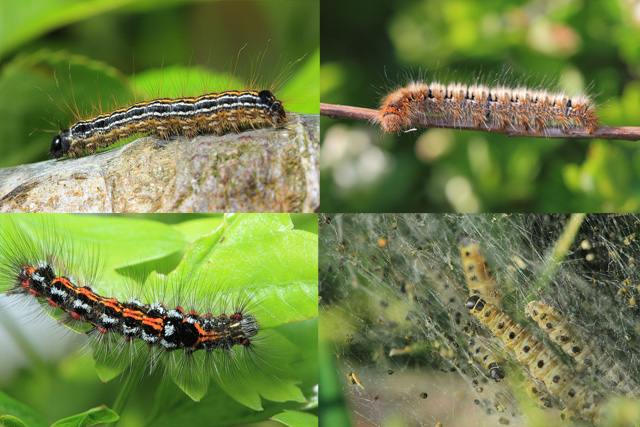
Lacky Caterpillar – Malacosoma nectar (top left), Oak Egger – Lasiocampa quercus (top right), Yellow-tail – Euprocitis similis (bottom left) and Ermine Micro Moth (botom right) were all found on Hawthorn in May.
Over-management is one of the biggest problems facing species that live in hedgerows. The practice of annual cutting using a mechanical flail creates a uniform and species-poor hedgerow that is of little value to wildlife. Mechanical flailing also makes the option of leaving selected saplings to become hedgerow trees much more difficult. In contrast, traditional methods of hedge laying are favored at Parc Slip Nature Reserve where attention is given by the Wildlife Trust in creating well-structured hedges with a variety of habitat niches for a wide range of invertebrate species.
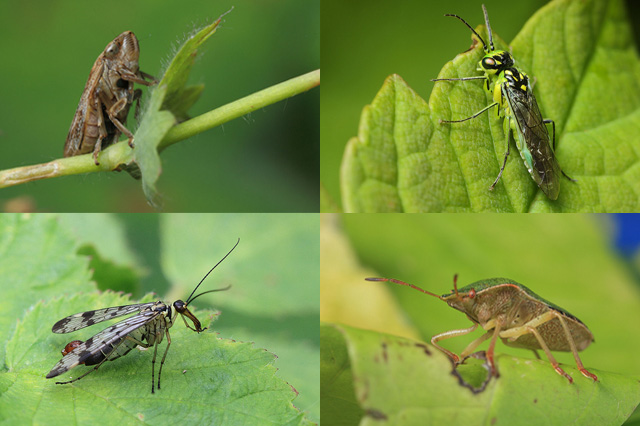
A wide range of insects thrive on well-structured hedges.
Common Froghopper – Philaenus spumarius (top left), Sawfly – Rhogogaster viridian (top right), Scorpion Fly – Panorama communist (bottom left) and Green Shield Bug – Palamena prison (bottom right)
Broad, tall hedges are the best for supporting most invertebrates. Maintaining herb-rich hedge bottoms and wide margins will also increase the habitat niches available. Continuing hedgerow loss and neglect and an over-tidy approach to hedgerow management could be harmful to wildlife.
Whilst cutting is discouraged during the bird nesting season, which corresponds with a peak period for many insects, there is no ‘safe’ window for cutting. Different species of insects are present through spring, summer and autumn, whilst many over-winter as eggs or cocoons on twigs. Equally, the associated ground flora is vulnerable, and some invertebrates spend the winter in old stems and seed-heads. Only a proportion of the total hedgerow in any given area is cut in a single year, to ensure that overwintering species are not completely eliminated.
Rotating the cutting over several years will ensure that invertebrate breeding and feeding places will always be present and that plants, such as white bryony or ivy, are allowed to flower each year. It will also ensure that some shaded areas are retained.
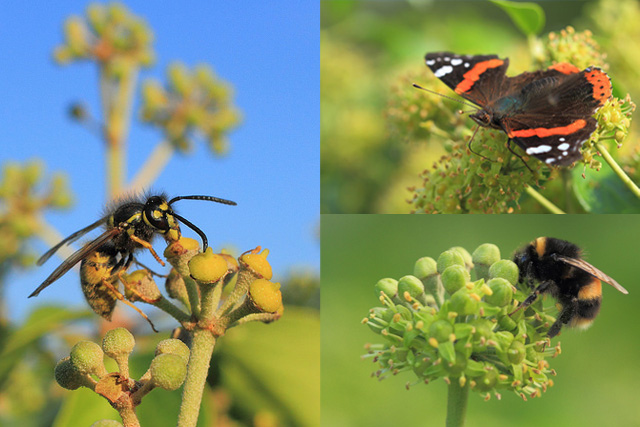
Rotating cutting over several years will ensure that feeding plants such as Ivy are allowed to flower each year, attracting a diverse range of insects such as the Common Wasp (Vespula vulgarise), Red Admiral (Atlanta Venessa) and Bumble bee.
Cutting every three or more years will allow hedge plants to produce flowers and berries and achieve a better structure. Annual flailing has had a severe impact on many species of butterfly and moth. Hedgerow caterpillars, such as those of the nationally scarce Small Eggar moth (Eriogaster lanestris), have undergone a major decline due to over-zealous hedge trimming. Species such as the Lackey moth (Malacosoma neustria) and Brown hairstreak butterfly (Thecla betulae), which overwinter as eggs on shoots and twigs, are also very vulnerable to annual flailing. Repeated flail cutting at the same height will eventually produce a mass of scar tissue and dead branch ends which support few healthy shoots.

Many species of micro moth are very vulnerable to annual flailing.
Hedges are cut after most of the berries have gone; cutting when the hedge is in foliage or flower or still bears a large number of berries will remove invertebrate food sources. Winter is the best time, but attention must be given to the fact that many insects have stages that over-winter in hedgerows, both on the twigs and on the herbage. The Scarce vapourer moth (Orgyia recens) is almost exclusively found in hedgerows; its overwintering larvae are often destroyed by flailing.
Shrubs such as blackthorn, hawthorn, sallows, wild privet, field maple, crab apple and common buckthorn are allowed to grow large enough to flower as they are an important source of nectar and pollen for many insects. Other species such as oak and elm support many invertebrates including a number of nationally scarce leafhoppers. Since the loss of many elm trees to Dutch Elm disease, elm suckers are now particularly important for the White-letter hairstreak butterfly (Strymonidia w-album). It is also very important to maintain climbing plants in hedgerows. White bryony is host to tephritid picture-winged fly larvae in its berries, while bramble is very important for flower-visiting insects; its cut stems are also a major nesting site for various small solitary bees. Ivy is good for beetles which live in the dead wood of old stems, but its autumn flowers are especially important for providing food for late season insects by day and night. Native roses are mainly of value for moths and sawflies.

The pink flowers of the Wild Rose (Rosa Canina) which in the summer attract moths and sawflies are followed in the autumn by a terrific show of bright red hips which left hanging on hedgerows are a rich source of food for birds.
Thick hedges with tussocks and accumulations of leaf litter are likely to be preferred by invertebrates such as ground beetles. Hedges should be maintained so that they are still permeable to invertebrates, allowing them to exploit habitats on both sides of the hedge with ease. Many invertebrates are associated with the herbaceous plants which characteristically occur at the bases of hedges. Umbellifers such as cow parsley, hogweed, wild parsnip and hedge parsley attract large numbers of insects. Nettles are the foodplants of butterflies such as the Small tortoiseshell and Peacock and the Orange-tip butterfly breeds on hedge garlic. Other useful hedge-bottom plants are black horehound, which is the host plant for many beetles and bugs, and toadflax, host to the scarce Toadflax leaf-beetle (Chrysolina sanguinolenta). Wide margins should therefore be retained in order to allow such plants to flourish.
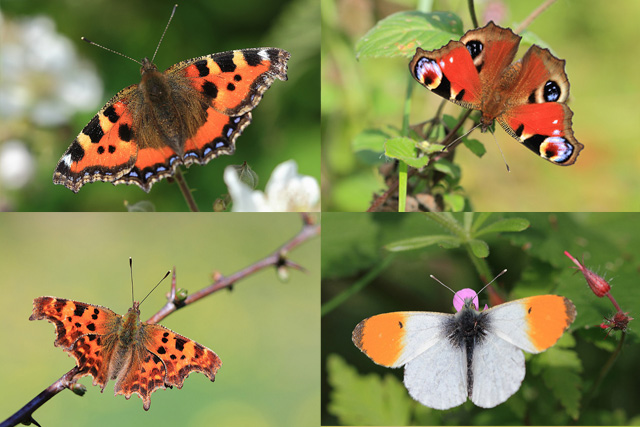
Nettles are the foodplants of butterflies such as the Small tortoiseshell and Peacock (top row). The Comma is also attracted to hawthorn blossoms and the Orange-tip butterfly feeds on hedge-bottom plants such as hedge garlic (bottom row).
There are many different styles of hedge laying throughout the countryside but the principles remain the same: Each stem is thinned down, bent-over, woven-in and that there is a good clean heal low to the ground.
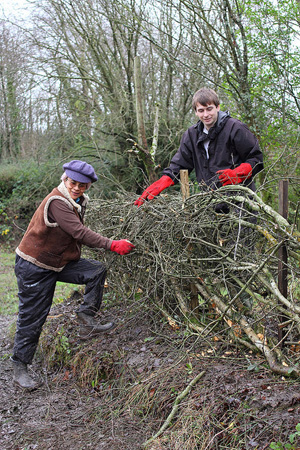
This traditional hedge-laying technique is carried out on a rotational basis. Although hedge-laying is a time-consuming practice, it does have the advantage of prolonging the life of the hedge and encouraging the growth of new shoots.
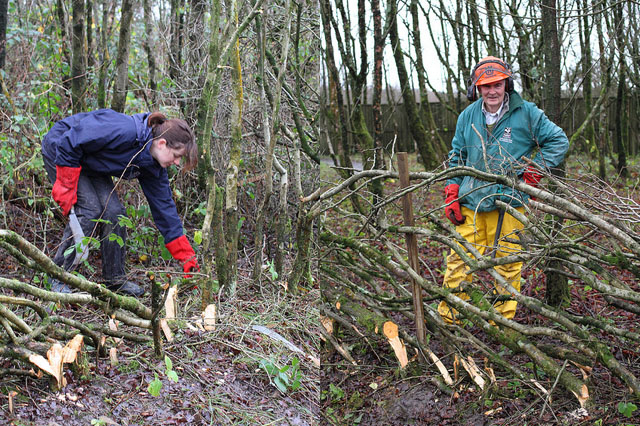
With grateful acknowledgement to The Wildlife Trust of South & West Wales
Parc Slip Nature Reserve, Bridgend, Wales

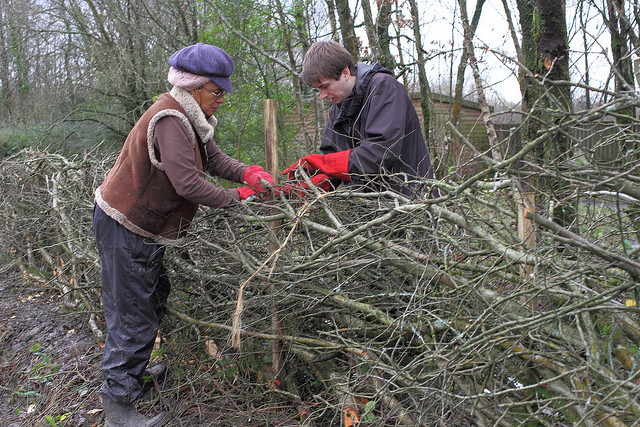
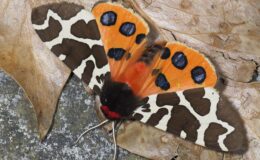
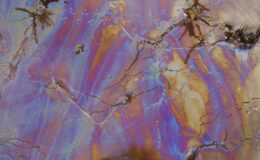
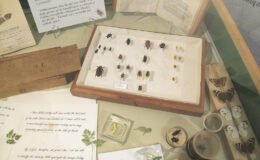
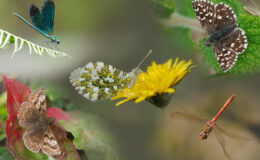
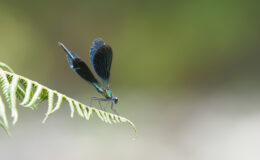
Leave a Comment